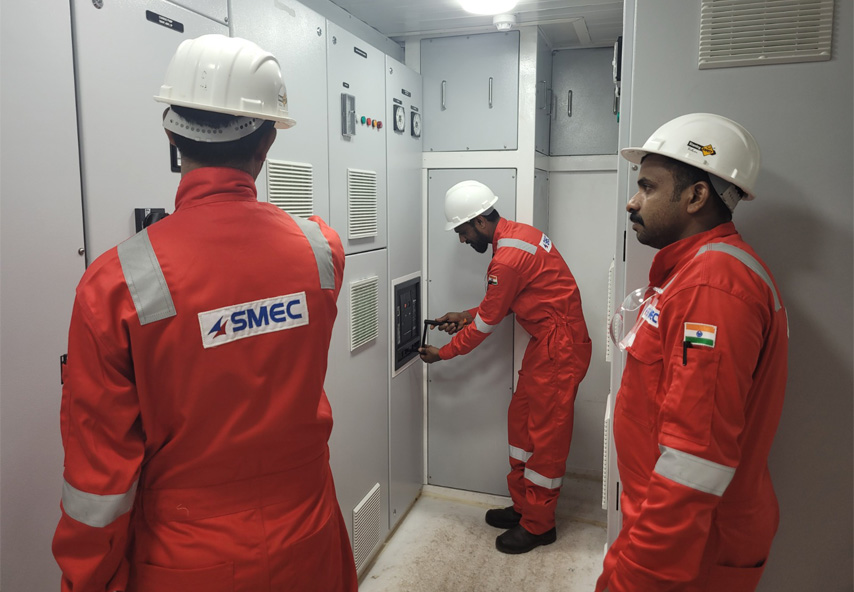
Battery Charger
SUITABLE FOR ALL EMERGENCY
POWER REQUIREMENTS IN HARSH
ENVIRONMENT

A general-purpose fully automatic battery charger / rectifier, converting
AC to DC ranging from 110 V – 415 V AC to 12 V / 24 V / 48 V DC (considering
the purpose & client requirements as per standards). Can be used for
different battery types. Protection against short circuits, overload and
high temperature.

Why SMEC?
Features:
- Nominal output Voltage – 12 / 24 / 48 V DC
- Total charge Current – 10 / 20 / 40 / 100 A
- Number of battery outlets – 1 No.
- Battery capacity Range – 200 – 1000 Ah
- Nominal input Voltage – 110 / 230 / 415 V AC 50/60 Hz Input Voltage range – +10% / -10%
- Power Supply Mode – Yes
- Display / Read-out – LED Display
- Galvanic Isolation – Yes Weight – 6 – 15 Kg
- Charge Characteristic – 3 Stage
- Charger Charge Current Bulk – 0-100 A (As per ratings)
- Charge Voltage Absorption – 28.5 V
- Absorption Time – 1 – 2 Hours
- Charge Voltage Float – 26.5 V
- Temperature Sensor – Optional
- DC Voltage Compensation – Optional
- Full Load consumption – As per ratings
- Current Control Function – Yes
- Temperature Range – 0-55 Degree Celsius
- Cooling – Forced Air Cooling
- Protection Degree – IP 23
- Protections – Over Voltage/ Over Current/ Over
- Load / Over Temperature/ Short Circuit


















